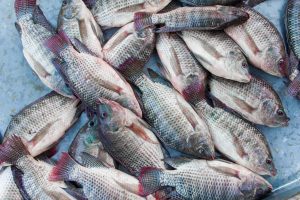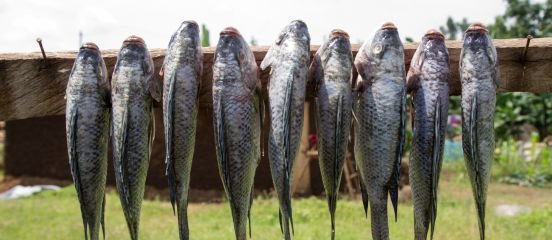Tilapia farming is highly profitable, and tilapia farming in India is growing day by day and reports suggest India is geographically poised to be the world leader in the fisheries sector.
Over the years, exports of Indian seafood have been on the increase with many Indian brands in the preferred list of Europe, America and other highly developed nations. Indian seafood exports reached $5 billion in 2014.
This has partly been attributed to its geography, It boasts of a vast coastline of 7,517 km, a network of lakes, rivers, and numerous other inland water bodies.
So what can Uyoma and those leaving around Lake Victoria learn from India’s success story?
To begin with, a vast population, especially the young generation, in rural India are deployed in the fishing industries and view fishing as an ultimate economic pilar.
In tilapia business, anyone can make a six-figure income, and you don’t need a university degree to do it.
Tilapia farming which originated in the Middle East and Africa has now become the most profitable business in most countries. Tilapia has become the second most popular seafood after crab, due to which its farming is flourishing. It has entered the list of best selling species like shrimp and salmon.

The most common breed of tilapia farmed around the world is the Nile Tilapia/Nile Perch, which accounts for roughly 75 per cent of farmed tilapia. Tilapia is tolerant of a variety of aquaculture environments; it can be farmed in brackish or salt water and also in pond or cage systems.
Tilapia is seasonal. It can survive and breed only in warmer water. The ideal water temperature for a tilapia farm is 82-86 degree. Fish will start dying below 55 degree, and you will see a drop in the growth rate. Hence, India is suitable for tilapia farming.
Tilapia starts breeding three months before being big enough to eat. It has an extremely high breeding rate. An adult tilapia female fish can produce up to 100 fries per week. Many breeders manage the breeding by making use of hormones to breed male tilapia.
Most farmers choose to keep only male tilapia in the grow-out stage. Male tilapia has proved more profitable as they grow bigger and are more time and energy-efficient. Female tilapia tends to waste energy and time due to breeding.
Tilapia is the second most farmed fish in the world and, but the commercial farming of tilapia is limited in India. Even though this fish was introduced in India long back (in 1952) and there was a ban on tilapia in 1959 by the fisheries research committee of India, recently tilapia farming was approved with certain conditions in some States. Genetically improved tilapia (GIFT) farming was approved with some guidelines.

The Nile Tilapia was introduced to India during late 1970s. In 2005, river Yamuna harboured only negligible quantity of Nile Tilapia, but in two years’ time, its proportion increased to about 3.5 per cent of total fish species in the river.
Presently in Ganga river system, proportion of tilapia is about 7 per cent of the total fish species. For tilapia farming in India, the optimum temperature for best growth is 15 degree Celsius to 35 degree Celsius. However, tilapia can survive in 10 degree Celsius to 40 degree Celsius.
The biggest challenge in tilapia farming is different aged and sized tilapia fish in the same pond due to their unconditioned propagation. As male tilapia grows faster compared to female tilapia, one should consider raising male tilapia by separating females which is known as “monosex tilapia fish farming”.
As the male tilapia is well-adopted to supplementary feeding and due to its rapid growth, there is a huge profit in commercial tilapia farming. This fish has a very high demand in local as well as international markets. Providing nutritious food in commercial tilapia production is very important for quick growth and higher body weight of the fish.
Tilapia eats plants, loves protein-rich duckweed (equal in protein to commercial fish feed) and also filters algae from water using tiny combs in its gills. Combining duckweed and commercial fish feed is good, but tilapia grows ok on duckweed alone.
As the demand for fish is increasing, diversification of species in aquaculture by including more species for increasing production levels has become necessary. Introduction of tilapia in our culture systems is advantageous because it represents lower level in food chain and, thus, its culture will be economical and eco-friendly. Mono sex culture of tilapia is advantageous because of faster growth and larger and more uniform size of males.
Mono sex tilapia fish farming business is increasing rapidly day by day because it’s very profitable. If you are planning to go for tilapia fish farming on large scale, there are subsidies available for commercial farming.
Nile tilapia is a tropical species that prefers to live in shallow water. It is an omnivorous grazer that feeds on phytoplankton, periphyton, aquatic plants, small invertebrates, benthic fauna, detritus and bacterial films associated with detritus. Sexual maturity in ponds is reached at an age of 5-6 months. Spawning begins when the water temperature reaches 24°C.
The female incubates the eggs in her mouth and broods the fry after hatching until the yolk sac is absorbed. Fecundity is proportional to the body weight of the female. A 100-g female will produce about 100 eggs per spawn while one weighing 600-1000 g can produce 1,000 to 1,500 eggs. Nile tilapia can live longer than 10 years and reach a weight exceeding 5 kg.
The main advantage of ponds is that fish can be grown very cheaply through fertilisation. Many different types of ponds are used for tilapia culture. The most widespread but most unproductive are low input ponds with uncontrolled breeding and irregular harvesting; yields are typically 500-2000 kg/ha/yr of uneven sized fish.
If mono sex fish are stocked and regular manuring and supplementary feeding is practiced yields can be up to 8,000 kg/ha/yr of even sized fish. Poly-culture of tilapia with other native fishes in freshwater ponds is also widely integrated with agriculture and animal farming.


